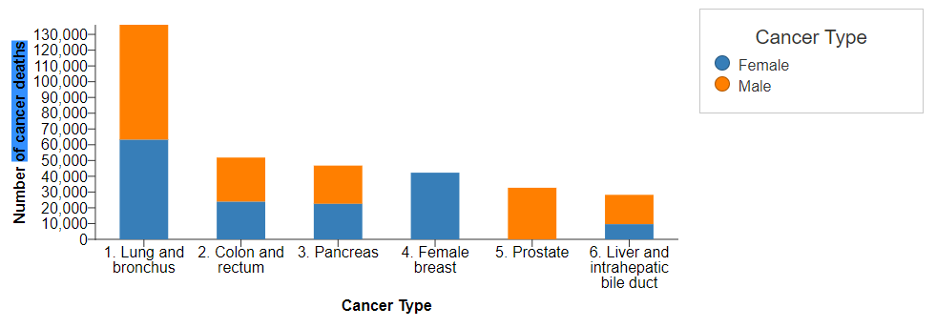Bronchial Asthma
Asthma is a chronic (long-term) condition that affects the airways in the lungs. The airways are tubes that carry air in and out of your lungs. If you have asthma, the airways can become inflamed and narrowed at times. This makes it harder for air to flow out of your airways when you breathe out.
Don’t let your asthma hold you back. Call us today to schedule your same-week appointment or book your appointment online.
Pneumonia
Pneumonia is a clinical condition in which the lungs are infected with a microorganism like bacteria, viruses or molds. Even with extensive workup, the microbe causing pneumonia can be found in less than half of the cases. Usual symptoms include fever, cough, shortness of breath and chest pain. Mild bacterial Pneumonia can be treated by antibiotics at home, while more severe pneumonia typically warrant admission to hospital for intravenous antibiotics.
While pneumonia could be related to microbe exposure from our environment, rare cases of pneumonia that keep recurring in the same area could indicate local problem inside the airways like foreign body or underlying lung cancer blocking the airway.
If you or your family members have symptoms of pneumonia. . Call us today to schedule your same-week appointment or book your appointment online.
Obstructive sleep apnea
Sleep apnea is a common condition in which your breathing stops and restarts many times while you sleep. This can prevent your body from getting enough oxygen. You may want to talk to your healthcare provider about sleep apnea if someone tells you that you snore or gasp during sleep, or if you experience other symptoms of poor-quality sleep, such as excessive daytime sleepiness.
Types of sleep apnea
There are two types of sleep apnea.
- Obstructive sleep apnea happens when your upper airway becomes blocked many times while you sleep, reducing or completely stopping airflow. This is the most common type of sleep apnea. Anything that could narrow your airway such as obesity, large tonsils, or changes in your hormones levels can increase your risk for obstructive sleep apnea.
- Central sleep apnea happens when your brain does not send the signals needed to breathe. Health conditions that affect how your brain controls your airway and chest muscles can cause central sleep apnea.
Had enough of daytime sleepiness and morning headaches? Call us today to schedule your same-week appointment or book your appointment online.
COPD
COPD stand for chronic obstructive pulmonary disease. It is a long-term inflammatory condition that affects the lung mainly due to cigarette smoking. It leads to narrowing of the airway with difficulty of the air flowing in and out of the lungs. By its nature this is progressive disease that tends to worsen with time. It is estimated that about 15 million adult in the United State are struggling with COPD. COPD usually include 2 main condition
- Chronic bronchitis: This is related to irritation and inflammation from cigarettes causing airways to secrete a lot of thick mucus which makes them there were with time and makes it harder to breathe
- Emphysema: This is a term to describe permanent damage affecting the walls of the air sacs in our lungs that helps us breathe oxygen in and carbon dioxide out. By the end of the disease the elastic Stretchy air sacs gets damaged and that makes it hard for the lungs to move the air out of the airway.
Is COPD limiting your activity? Tired of coughing phlegm every day? Call us today to schedule your same-week appointment or book your appointment online.
COPD
COPD stand for chronic obstructive pulmonary disease. It is a long-term inflammatory condition that affects the lung mainly due to cigarette smoking. It leads to narrowing of the airway with difficulty of the air flowing in and out of the lungs. By its nature this is progressive disease that tends to worsen with time. It is estimated that about 15 million adult in the United State are struggling with COPD. COPD usually include 2 main condition
- Chronic bronchitis: This is related to irritation and inflammation from cigarettes causing airways to secrete a lot of thick mucus which makes them there were with time and makes it harder to breathe
- Emphysema: This is a term to describe permanent damage affecting the walls of the air sacs in our lungs that helps us breathe oxygen in and carbon dioxide out. By the end of the disease the elastic Stretchy air sacs gets damaged and that makes it hard for the lungs to move the air out of the airway.
Is COPD limiting your activity? Tired of coughing phlegm every day? Call us today to schedule your same-week appointment or book your appointment online.
Chronic Cough
Cough is very common and irritating respiratory symptoms that can be related to multiple underlying etiologies. While some of those could be related to simple viral infection or allergies , other chronic ( long standing ) Any cough that last more than 8 weeks could be an early sign of serious condition like lung cancer. To simplify the work up for underlying etiologies , pulmonologist usually divide cough into three types
Acute cough: Present for up to three weeks
Subacute cough: present for three to eight weeks
Chronic cough: present for more than eight weeks
Are you getting sick of hacking cough? Is cough interrupting your sleep? Call us today to schedule your same-week appointment or book your appointment online.
Lung Cancer
Lung cancer is the leading cause of cancer death in the United states and across the world. In 2017 Lung cancer claimed the lives of 1.9 millions people. According to the CDC , more than 130,000 people died of lung cancer in the United states in 2020 which accounted for 23% of all cancer deaths.

Smoking is the most common cause of lung cancers, but genetics, pollutions and certain exposures could also affect the patient’s risk of developing lung cancer.
Chronic cough, coughing up blood , chest pain and recurrent pneumonias could all be manifestations of underlying lung cancer. Chest imaging , most commonly Computed tomography CT, is usually the best modality to screen and diagnose lung cancer. Once the imaging showed lung mass, the next step is usually getting tissue sample either from the lung itself or enlarged lymph node in the middle of chest. Tissue samples and genetic studies help determine the type of the lung cancer. This is important as different types gets treated differently. Usually further imaging of the whole body is needed to decide if the tumor has spread. This is call metastasis. Metastasis happen with cancer cells spread out of the lung to other organs like brain, bone or liver. Tumor staging is a representation of how far the tumor has spread and this is very important to guide the treatment and predict cure rates.
Have you or a loved one been diagnosed with lung cancer? Call us today to schedule your same-week appointment or book your appointment online.
Lung Cancer Screening
Screening for cancer means using a certain procedure (imaging, lab work or physical exam) to detect a cancer while it is in the early stages, at which time they are more likely to be curable.
While the best way to avoid lung cancer in his to quit smoking unfortunately some people find that hard to do and for that reason researcher have studied multiple modalities to diagnose lung cancer. Based on the most recent randomized trial call the National lung screening trial NLST, yearly screening with low-dose radiation chest CT scan has become the recommended screening tool for persons between the age of 50 and 80 who are chronic smokers (smoked for more than 20 years) or quit smoking within the last 15 years.
Are you between 50-80? Have you smoked for more than 2o years? Call us today to schedule your same-week appointment or book your appointment online and we will help you get screened for lung cancer.
Quitting Smoking
Cigarette smoking is the most common preventable cause of mortality in the United State and word wide. It is estimated that about 500,000 people in the United State die annually related to smoking health hazard.
Patients who can quit smoking, at any age, have significant reduction developing or dying from smoking related diseases. Furthermore, patient who quit smoking still benefit even after the developed smoking related lung disease is like emphysema or coronary artery disease.
It takes a fighter to quit smoking. Are you willing to try? Call us today to schedule your same-week appointment or book your appointment online.
Pleural Effusion
Pleural effusion means the buildup of fluid in the pleural space. This is the space between the top of the lung and the lining of the chest wall. Pleural effusion could be found on chest imaging without causing any symptoms. Is more fluid buildup patient might have difficulty with breathing, cough, chest pain or fever.
Possible causes of pleural effusion include congestive heart failure, kidney disease, pneumonia, or lung cancer.
To diagnose the pleural fluid usually the patient needs Thoracentesis, which is a procedure that include passing a catheter between the ribs to drain a sample of the fluid and send it to different laboratory studies. Sometime bigger amount of the fluid is removed to help the lung re-expand and relief the patient breathing.
Have you been told you have pleural effusion? Call us today to schedule your same-week appointment or book your appointment online.
PleurX Catheter
This is a have flexible tube that is usually inserted into the pleural space from one end and the other and stays outside the body under a sterile dressing. The tube is usually inserted as an outpatient procedure for patients who have pleural fluid that keeps coming back due to underlying cancer. The patient’s family or home health nurse is usually provided with vacuum bottles to help the drain fluid intermittently to keep the lung open and help the patient breathe easily.
Have you been diagnosed with recurrent pleural effusion related to cancer? Call us today to schedule your same-week appointment or book your appointment online.
Pulmonary Embolism (clots in the lung)
Is a life-threatening condition in which there is a sudden blockage of the blood flow in the lung arteries. Most of the clots in the lungs originate in the lower limbs before they break loose and migrate with the blood flow to get stuck in the main lung arteries.
Chronic debility, genetic diseases, cancers and orthopedic surgeries are some of the conditions that could cause clots in the legs and lungs.
Pulmonary embolism could present sudden shortness of breath, chest pain, coughing up blood or even passing out spell.
The diagnosis is usually based on ultrasound of the legs and CT scan of the lung
Initial treatment is usually with blood thinners that can be given in the vein or under the skin and typically patient goes home on long-term blood thinners as pills. Some severe cases in which the heart gets under significant strain from the clot stronger blood thinners called thrombolytics can be given in the hospital to dissolve the clot.
People who have significant risk of bleeding and cannot take blood thinners could benefit from having a filter inserted in a large vein in the abdomen called inferior vena cava to prevent the clots from the legs to travel to the lungs.
Have you or your family member been diagnosed with leg or lung colts? Call us today to schedule your same-week appointment or book your appointment online.


